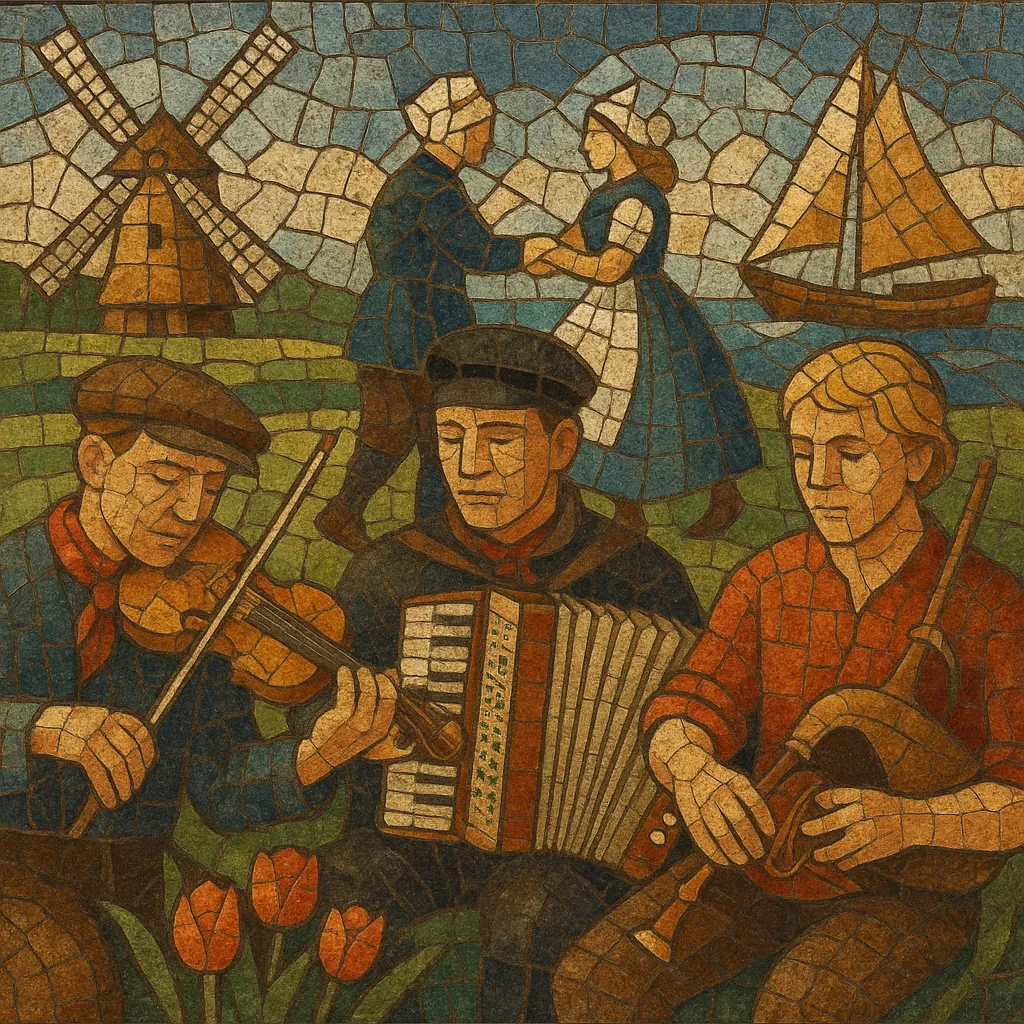
Dutch folk music (Nederlandse volksmuziek) comprises traditional songs, dance tunes, and ballads from the Netherlands, passed down through oral tradition and later collected by folklorists. It ranges from seafaring shanties along the coasts to rural dance music in provinces such as Brabant, Limburg, Groningen, and Friesland.
Typical instruments include the diatonic button accordion (trekharmonica), fiddle, hurdy-gurdy (draailier), bagpipes (doedelzak), recorder and transverse flute, guitar, mandolin, jaw harp, and hand percussion. Many tunes are set to European partner-dance meters such as waltz (3/4), polka (2/4), schottische (4/4), and mazurka (3/4), and are performed at village festivities, markets, and kermis fairs. Songs often use regional dialects and tell stories of love, work, the seasons, religious and historical events, and seafaring life.
Stylistically, Dutch folk music is strophic and melodic, with diatonic harmonies (I–IV–V progressions), modal touches in older repertoire, and drones or bourdon textures from hurdy-gurdy or bagpipes. It has fed into modern revivals and crossover acts that keep the repertoire alive on contemporary stages and festivals.
Folk singing and dancing in the Low Countries goes back centuries, but the emergence of "Dutch folk music" as a recognized corpus dates largely to 19th‑century nation‑building and folklore collecting. Local work songs, ballads, sacred and seasonal songs, and village dances (waltz, polka, schottische, mazurka) were transmitted orally and tied to regional dialects (e.g., Frisian, Limburgish, Brabants). Maritime communities contributed a rich seam of shanties and narrative songs.
In the early to mid‑20th century, scholars, local choirs, fanfare and brass ensembles, and folk dance groups preserved and arranged traditional melodies. Radio and print songbooks spread repertoire nationally. After WWII, community dance groups and regional music clubs kept living traditions active at kermis fairs and local festivals.
The pan‑European folk revival catalyzed a Dutch scene that emphasized both archival repertoire and contemporary songwriting in dialect. Bands like CCC Inc. and Fungus popularized traditional tunes and approaches, while collectors and revivalists brought back instruments such as the trekharmonica and hurdy‑gurdy. Protest and singer‑songwriter currents intersected with folk aesthetics.
Acts such as Gerard van Maasakkers, Rowwen Hèze, Pater Moeskroen, and dialect groups from Limburg and Brabant blended folk with pop, Tex‑Mex, and party‑band energy. Celtic‑leaning groups (e.g., Rapalje) and early‑music/folk interpreters (e.g., Folkcorn) expanded the palette, while festivals and folk clubs nurtured scenes across provinces.
Today, Dutch folk thrives across community dance circles, dialect pop/folk, historical performance projects, and crossover styles (pagan folk, folk rock/metal). The repertoire remains a living tradition—sung in Dutch and regional dialects—continually refreshed by new arrangements, instrument building, and intergenerational transmission.

